Handstand Push Up: Benefits, Muscles Worked, and More
Few exercises showcase the strength and dedication of their performer as much as the handstand push-up - a visually distinct inversion exercise where the athlete quite literally pushes their entire body against the flow of gravity.
Regardless of whether you’re here to improve your handstand push-up performance or training to one day reach it, continue reading to learn how to best take advantage of its unique benefits.
But, if one were to put it concisely, the handstand push-up may be classified as a highly advanced bodyweight exercise primarily used as a method of training muscles like the deltoids, chest and triceps in a significantly intense manner.
What is the Handstand Push-Up?
In a technical sense, the handstand push-up is considered to be a multi-joint compound calisthenic exercise that requires a high degree of isometric strength, proprioception and bodily control to perform.
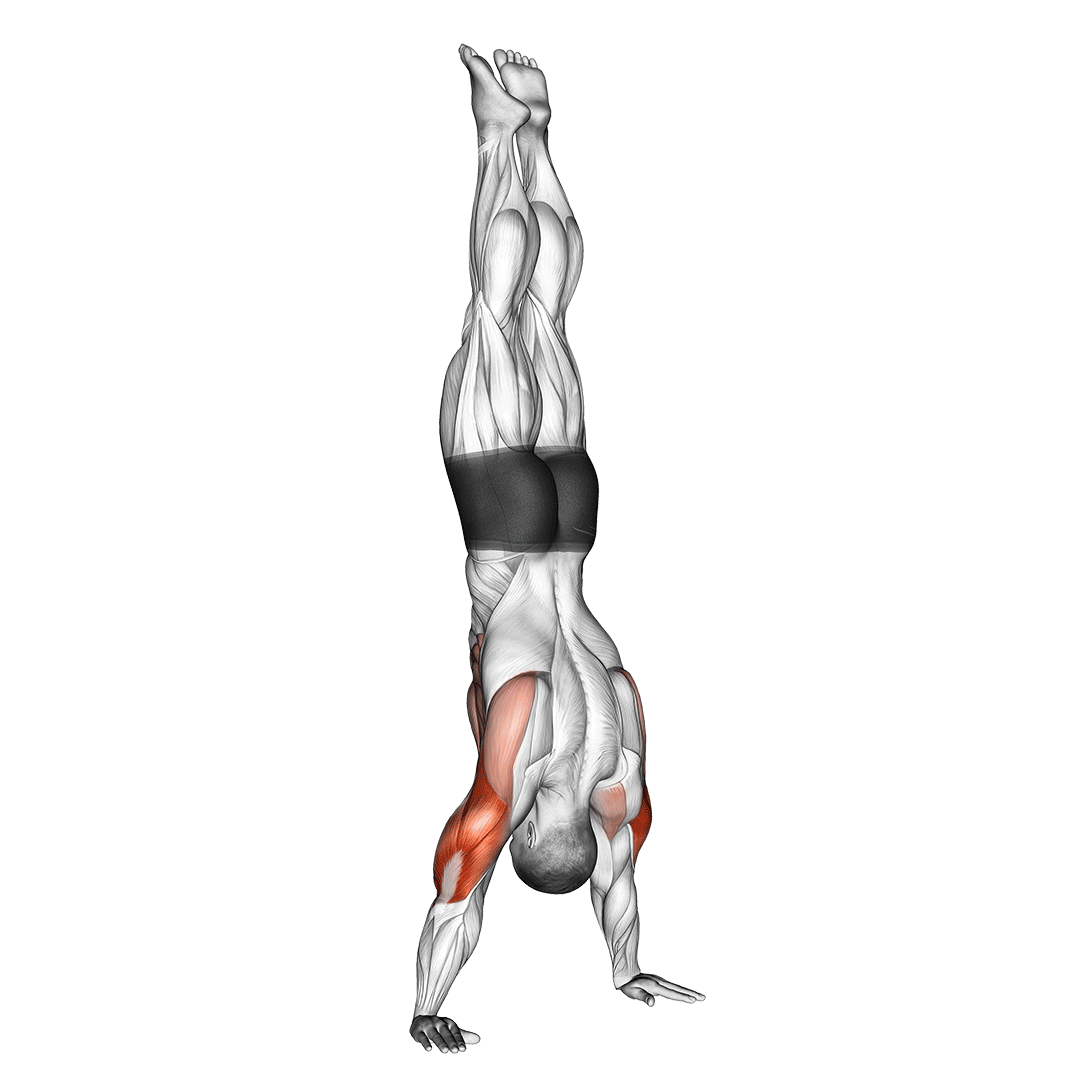
As such, many athletes who have yet to develop the necessary strength and skill will often seek to perform easier variations that allow them to build said strength and skill towards performing a full handstand push-up.
In terms of training programming, the handstand push-up will invariably act as a primary or secondary compound exercise due to the sheer intensity of each repetition. It is occasionally paired with other upper body exercises like the push-up or dip so as to create a more rounded bodyweight push workout.
Despite this rather high barrier of entry, the handstand push-up stands unparalleled among all other bodyweight exercises in terms of muscular recruitment and the development of many athletic skills, and is an invaluable tool for advanced exercisers and athletes alike.
Who Should Do Handstand Push-Ups?
Handstand push-ups are rather difficult to perform without prior strength and bodyweight exercise familiarity, and as such should be reserved for exercisers of at least an intermediate level, if not advanced.
For exercisers without the needed core strength, upper body pushing power or sense of balance, variations like the wall-supported handstand push-up or pike push-up may be performed instead.
How to do a Handstand Push-Up
As a forewarning, it is generally a poor idea to attempt to perform a handstand push-up if one cannot first perform a wall-supported handstand push-up.
To begin performing a repetition of the handstand push-up, the exerciser will invert themselves before a wall by bending before it with their hands on the floor and kicking against the ground so as to kip into a handstand position, their feet catching against the wall.
The hands should be set just a bit wider than shoulder-width, adjusting for comfort as needed.
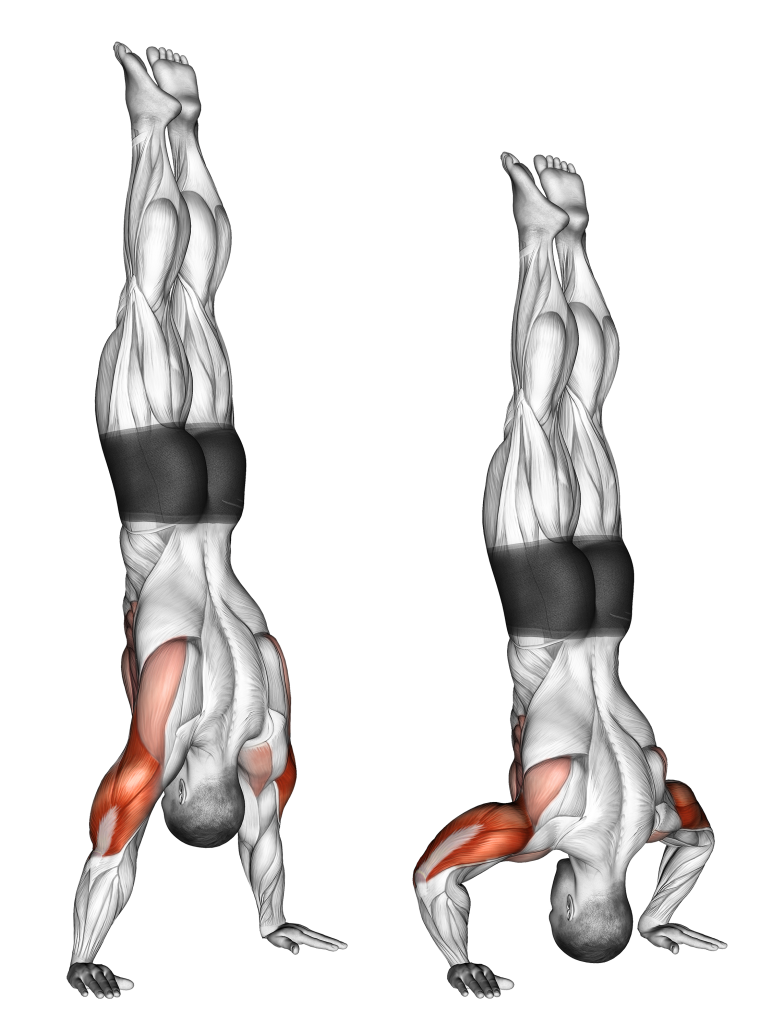
Contracting the core and balancing themselves on the palms of their hands, the exerciser will then detach their feet from the wall and form a vertical line by contracting the glutes, abdominals and the muscles of the back.
Then, bending at the elbows, the exerciser will lower themselves until the top of their head is within several inches of touching the floor.
Once close enough, they will then push through the palms of their hands and return their elbows to a state of full extension - thereby completing the repetition.
What Muscles are Worked by the Handstand Push-Up?
The handstand push-up is the very definition of a compound exercise, meaning that it trains more than a single muscle simultaneously - although not all of said muscles are worked to the same extent.
Primary and secondary mover muscles are the muscles utilized in a dynamic capacity, with secondary movers being recruited to a lesser extent; In contrast, stabilizers are those that are simply used in a static one.
Primary Mover Muscles
With each repetition of the handstand push-up, the exerciser will be working their deltoids, pectorals, triceps brachii, trapezius and latissimus dorsi to a significant level.
Secondary Mover Muscles and Stabilizers
In terms of secondary mover muscles, the handstand push-up targets the serratus anterior and the muscles of the middle back.
For stabilizers, the forearms, core, erector spinae and glutes all work in tandem to stabilize the body.
What are the Benefits of the Handstand Push-Up?
Apart from the more general benefits (like postural or mobility boosts) seen with all types of resistance training, the handstand push-up can also offer a few further advantages over most other bodyweight exercises - all of which make performing it well worth the effort.
One of the Few Shoulder-Focused Calisthenic Exercises
While there are indeed a number of push-up variations that target the deltoids, few do so to the degree that handstand push-ups are capable of reaching.
Comparable to that of the barbell overhead press, the handstand push-up may be the single most effective bodyweight shoulder muscle mass builder, especially once the exerciser has mastered stabilizing their body through the use of other muscle groups so as to better divert energy towards dynamic deltoid contraction.
Excellent for Building Upper Body Strength and Power
Handstand push-ups target nearly all the muscles of the upper body to a highly intense degree - so much so, that there are few calisthenic movements that are capable of rivaling the handstand push-up in terms of building upper body strength and power.
When performed regularly and alongside other exercises that target the lesser-worked muscles of the handstand push-up, the exerciser will undoubtedly develop a high level of upper body muscular strength, even without the need for any sort of training equipment.
Development of Coordination, Balance and Other Soft Skills
Being in an inverted state while under strain can be difficult for many, and regularly participating in exercise that features the same conditions will help build up many skills needed both in athletic activities and everyday life.
Soft skills like bodily coordination, a sense for where one’s own body is in space and maintaining proper blood pressure in an inverted state are just a few of the soft skills practiced with each handstand push-up - although exercisers regularly performing them may already be quite skilled in said capabilities.
Unparalleled Gymnastics Carryover
Although the muscular and non-muscular benefits of handstand push-ups are useful for individuals of all types, they are particularly needed by gymnasts and athletes who participate in sports of a similar nature.
Not only do gymnasts regularly participate in activities that are mechanically similar to that of the handstand push-up, but the development of upper body muscular strength and the practice of many soft skills equates to the handstand push-up being perfect for said gymnasts.
Furthermore, gymnasts of significant experience can progress even more with more advanced variations of the handstand push-up, such as the kipping handstand push-up or the parallettes handstand push-up.
Excellent for Training Stabilizer Muscles
Because the handstand push-up involves stabilizing the entirety of the body with the relatively small palms as the sole source of support, muscles utilized in an isometric manner (like the abs or glutes) will be forced to work to a great extent so as to prevent the body from tipping over.
With regular performance, handstand push-up practitioners will slowly develop the isometric capacity of their musculature, leading to a reduced risk of future injury and generally improved stability in all other movements.
Common Handstand Push-Up Mistakes
The handstand push-up is technically complex - but some mistakes are more common than others. The following are the most frequently encountered errors in handstand push-up execution.
Arching the Back
Throughout the entire handstand push-up set, the exerciser must strive to keep their entire body in a vertical line.
Allowing the upper back to bend can potentially make the exercise more difficult than needed, and rounding the lower back will greatly disbalance the entire body, potentially resulting in injury.
Exercisers on their journey to perform an unsupported handstand push-up will wish to practice exercise mechanics related to maintaining proper spinal curvature, such as mastering proper core bracing, abdominal contraction and understanding the position of their back relative to the rest of the body.
Overly Relying on the Wall
Some exercisers may already be capable of performing a full handstand push-up, but are too afraid of injuring themselves to attempt an unsupported one. Overly relying on the wall tends to become a “crutch” so to speak - robbing the exerciser of potentially further training stimulus and achievement.
Of course, this does not mean that every exerciser should attempt a fully unsupported handstand push-up immediately.
Instead, it is best to perform progression exercises until they have reached a point in their development where performing the handstand push-up is the next best step, and the wall-supported variation is no longer the highest effort they can offer.
Setting the Hands too Far Apart
Though tempting, setting the hands too far apart beneath the torso can effectively reduce the range of motion of the exercise. This will reduce the amount of tension placed on muscles like the triceps and pectorals, making the handstand push-up less effective as an exercise.
The hands should be splayed beneath the torso at just slightly wider than shoulder-width apart.
Progressions to the Handstand Push-Up
It goes without saying that the majority of individuals cannot actually perform a full handstand push-up, as it is both physically demanding and technically complex in execution.
Fortunately, many calisthenic athletes and gymnasts have managed to build up their technical skill and upper body strength by performing progression exercises - easier and less demanding exercises that help develop a foundation for performing the handstand push-up.
Note that the exercises listed herein are arranged in chronological order, meaning that one precedes the next as the exerciser develops both physically and mentally.
1. Conventional Push-Ups
The basis of all calisthenic pushing exercises is the conventional push-up; a multi-joint compound exercise that primarily works the triceps and pectorals to a comparatively moderate level of intensity.
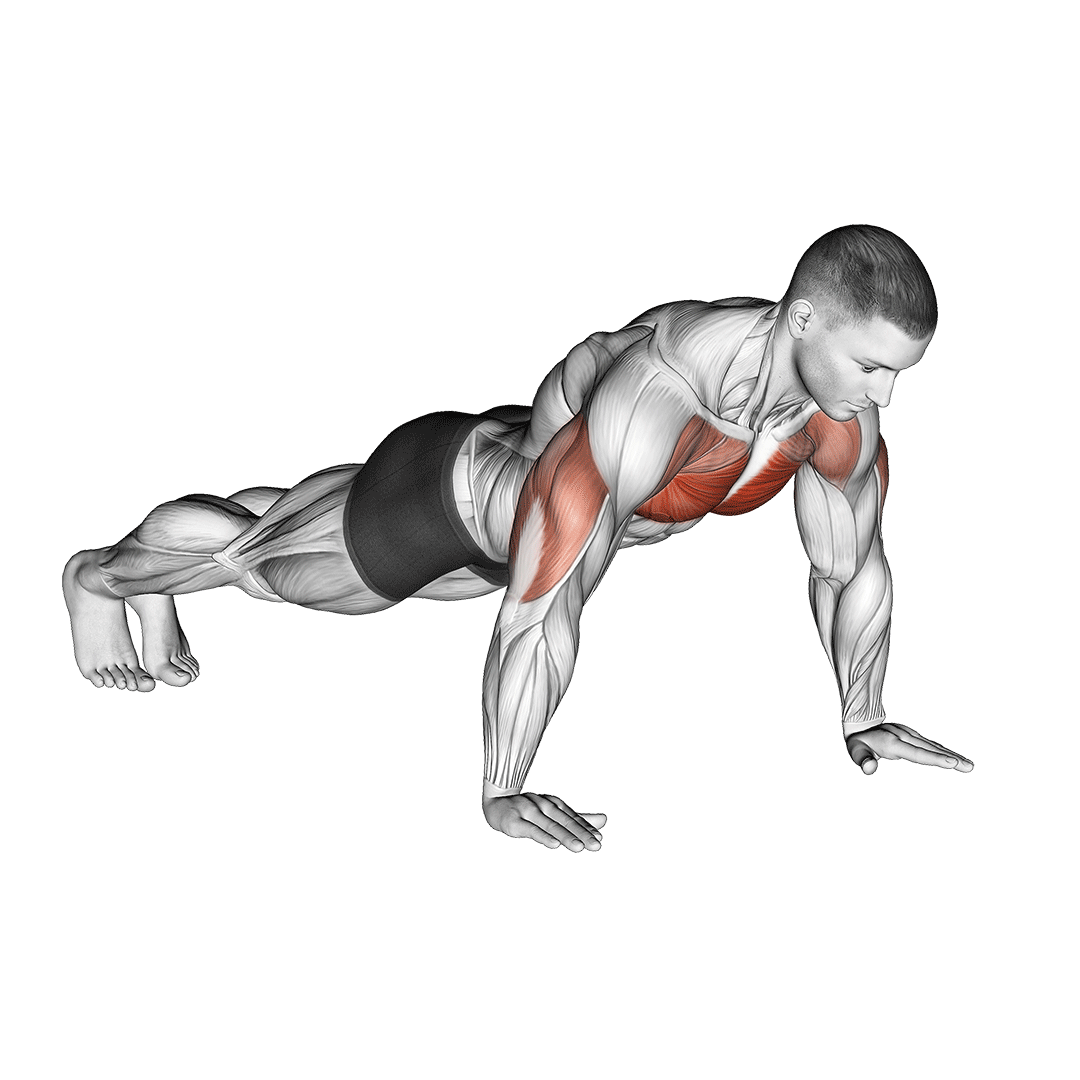
Novices or athletes just returning to training may wish to first begin with the push-up so as to reinforce basic upper body mechanics and muscular strength.
2. Pike Push-Ups
Once the exerciser has surpassed push-ups in terms of specificity towards the handstand push-up, they may then transition to the pike push-up - an advanced variation of the conventional push-up that places the hips and glutes in the air so as to angle the torso at a decline to the floor.
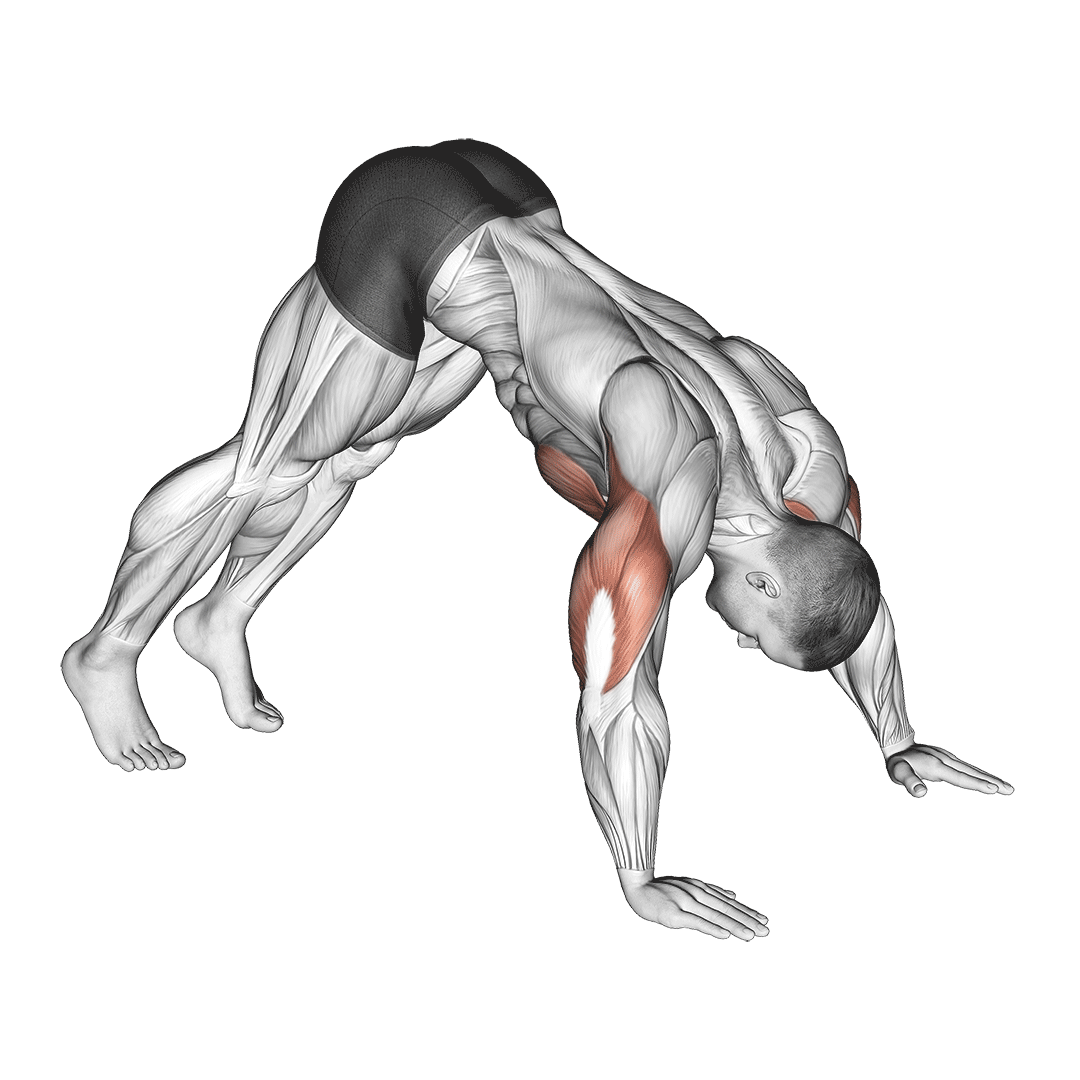
This is considered to be a partial inversion exercise, meaning that it is the first real step towards practicing the sort of skills needed to do a handstand push-up, alongside helping prepare the muscles of the chest, triceps and deltoids as well.
3. Decline Pike Push-Up
Once the exerciser has mastered the conventional pike push-up and can perform it without too much difficulty, they may take things even further and perform the exercise with the lower body elevated even further.
This will make the torso’s decline angle even more steep, approaching the sort of completely vertical inversion that is characteristic of the handstand push-up.
At this point, the exerciser should have built up at least an intermediate level of physical strength and technical familiarity, and is well on their way to performing a full handstand push-up.
4. Wall Handstand Push-Up and Handstand Holds
Finally, the last progression step to performing a fully unsupported handstand push-up is to perform it with the support of a wall.
The wall handstand push-up is simply a regular handstand push-up performed with the feet set against a wall, aiding in balance and somewhat reducing the amount of the exerciser’s own weight that is being moved.
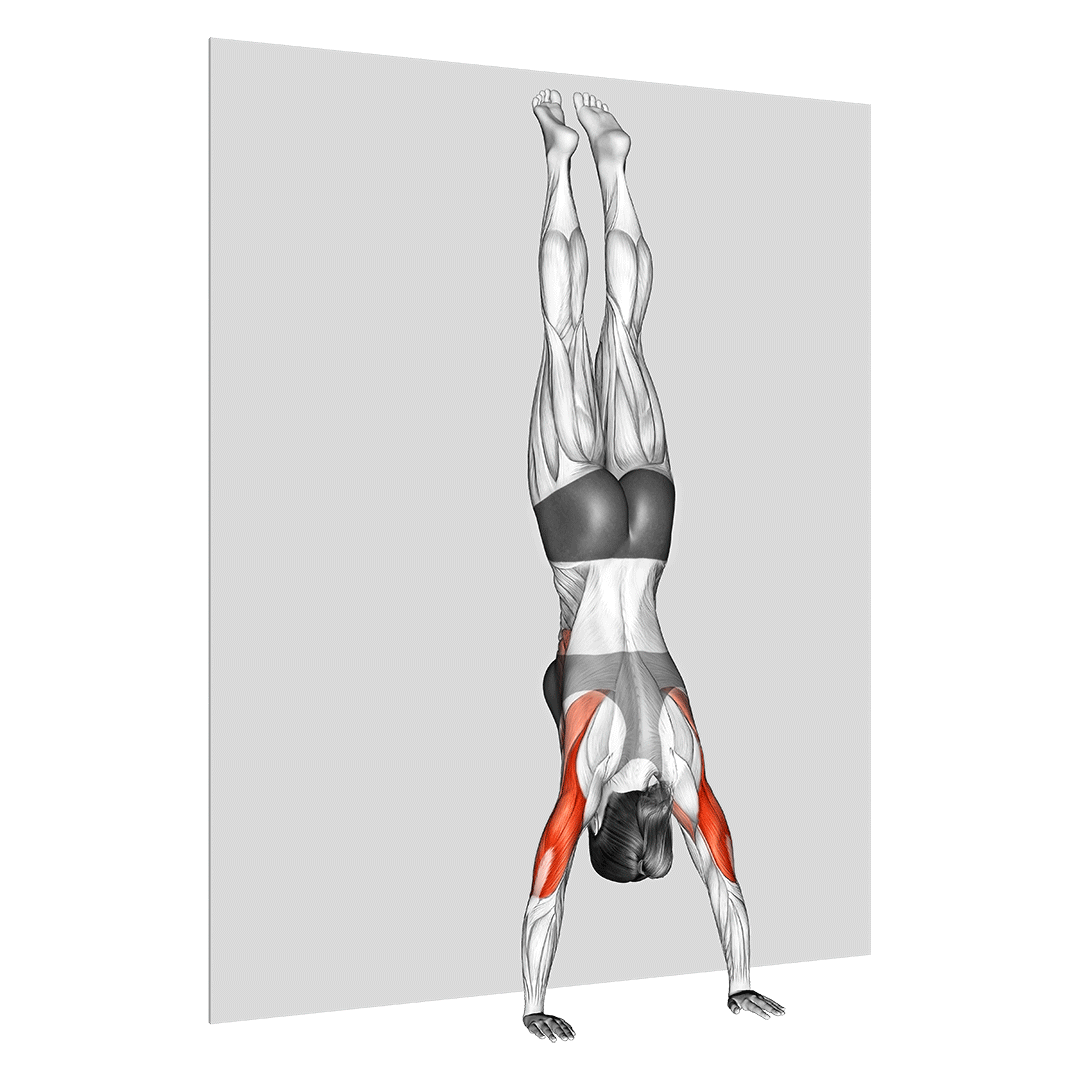
In addition, exercisers having trouble mastering the physical aspect of balancing the handstand push-up can perform handstand holds, where they perform an unsupported handstand push-up but forego bending the arms, instead remaining in the fully inverted position for the purpose of isometric contraction.
Once the two exercises can be performed with (relative) ease, the exerciser is prepared to perform an unsupported handstand push-up, and may do so provided that the floor is matted and care is taken to perform the movement in as safe an environment as possible.
A spotter is advisable, as well.
Frequently Asked Questions (FAQ)
Do Handstand Push-Ups Build Muscle?
Yes - handstand push-ups are excellent for building up muscle in nearly all parts of the upper body. The high level of intensity and resistance involved is perfect for training muscles for athletic activity and strength development.
Are Handstand Push-Ups the Hardest Exercise?
Not necessarily - handstand push-ups are undoubtedly one of the most difficult exercises out there, but there are a number of further variations that take things to the next level. The one-handed handstand push-up or the parallettes handstand push-up are just a few examples.
How Do You Train to do a Handstand Push-Up?
To train for a handstand push-up, exercisers will need to perform a combination of physical conditioning exercises and technical practice so as to execute a handstand push-up safely and effectively.
These generally take the form of progression exercises that increase in intensity and complexity as the exerciser grows more experienced, eventually ending with a full handstand push-up after some time spent training.
In Conclusion
The handstand push-up has solidified itself as a unique and highly advanced bodyweight movement that is the perfect tool for the few exercisers capable of pulling it off.
But before getting too excited and attempting to perform one, it is important to keep in mind that the exercise is considerably difficult, and comes with its own risks when performed ineffectively.
If you are unsure of your own capabilities but would like to try the handstand push-up, it is best to seek out the advice and support of professionals who may help guide you (and spot you) as you do so.
References
1. Mizutori H, Kashiwagi Y, Hakamada N, Tachibana Y, Funato K (2021) Kinematics and joints moments profile during straight arm press to handstand in male gymnasts. PLOS ONE 16(7): e0253951. https://doi.org/10.1371/journal.pone.0253951
2. Prassas, Spiros G. "Biomechanical Model of the Press Handstand in Gymnastics", International Journal of Sport Biomechanics 4, 4 (1988): 326-341, accessed May 12, 2023, https://doi.org/10.1123/ijsb.4.4.326
3. Johnson, Abigail & Meador, Melanie & Bodamer, Meghan & Langford, Emily & Snarr, Ronald. (2018). Exercise Technique: Handstand Push-Up. Strength and conditioning journal. 1. 10.1519/SSC.0000000000000427.
